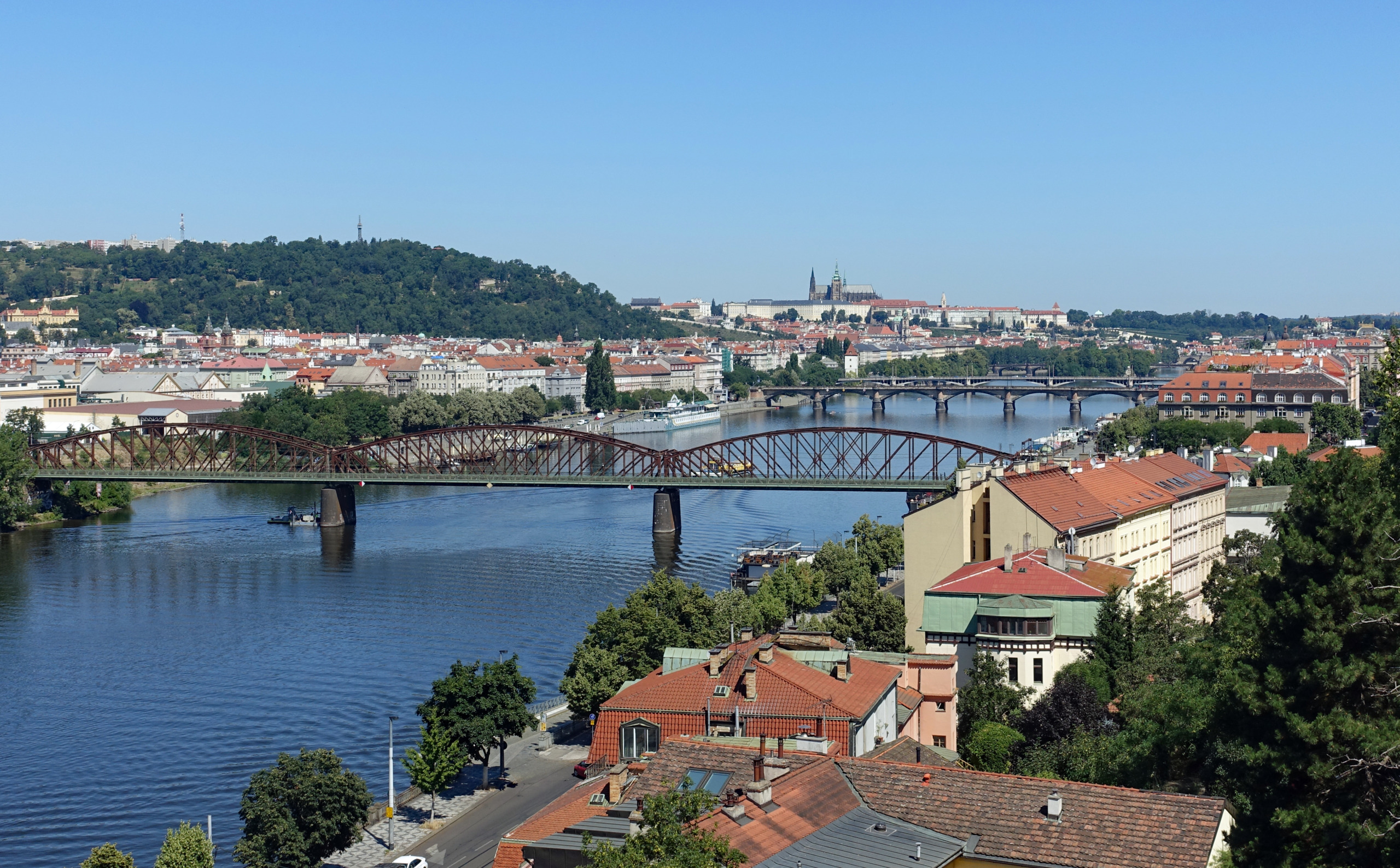
Prague is the capital city of Czechia (Czech Republic), and the largest city in the country with a population of just over 1.4 million. During the 14th century Prague became the capital of the Holy Roman Empire under Habsburg rule, and since the Middle Ages has been considered one of the most beautiful European cities. The region now known as Czech Republic was within the Kingdom of Bohemia and part of the Austro-Hungarian Empire until its dissolution in 1918, when Czechoslovakia was formed with Prague as its capital. In 1938 Hitler invaded the country and Nazi Germany was in control until 1945 when the Soviets seized power. The communists ruled from 1948 until the Velvet Revolution in 1989. In 1993 Czechoslovakia split into two countries, Czech Republic and Slovakia.
Prague is the only central European capital to escape the large-scale bombing during the wars and is the best preserved Baroque city in Central Europe. There are buildings dating from the 13th century to the present day in all major artistic styles. With a beautifully preserved Old Town, Prague deserves its nickname: the Golden City of a Hundred Spires.
Prague was our third city stay during our six weeks in Europe. We used RegioJet again to travel from Vienna to Prague and unfortunately the train was delayed 90 minutes leaving Vienna, so we had a lot of time to sit around the Vienna train station. We reserved seats in the Relax 2nd class car which has only 3 seats in each row and includes coffee and bottled water. Our tickets cost 18.50 Euros (USD $20.78) each for the 4 hour one way journey, this includes 6.15 Euros (USD $7.23) each compensation refund from RegioJet for the delay. Because RegioJet guarantees on time arrivals it’s worth checking with them for compensation if your train is delayed. They issue a credit against your ticket which can be used towards another train ticket or in our case we went to the RegioJet office and got a cash refund.
The day after our arrival in Prague we joined 100 Spires City Tours on their Free Old Town, Jewish Quarter and Charles Bridge Tour. It was an informative 3 hour walk around the historic center of Prague and a good way to begin our time here. The historic city center is full of beautiful old buildings and monuments so we got a good idea of places to re-visit during our stay.
Our apartment was on the edge of the old town, very close to the river and many of the popular tourist sites are within walking distance, or a short tram ride away. The public transit system here is free to people 65 years and older, we made good use of the trams using them for short hops around the city. We carried our Passports after reading its the only international ID accepted if you are asked for your ticket on the tram, we never saw a ticket checker.
While Prague has a long list of things to see and do the best-known attraction is the medieval Astronomical Clock, known as Orloj. This engineering marvel was created around 1410 and is so incredibly complicated it’s mind boggling. It’s impossible to describe the many features of the clock so here is a link to a more detailed description. Over the years the clock has been repaired many times and features added. In 1629 or 1659 wooden statues were added, and figures of the Apostles were added after a major repair in 1787–1791. During the next major repair in the years 1865–1866 the golden figure of a crowing rooster was added. The Orloj suffered heavy damage in 1945 by the Nazis but after significant effort, the machinery was repaired, the wooden Apostles restored and the Orloj started working again in 1948. Every hour, on the hour from 8 am to 11 pm, crowds gather in front of the Old Town Hall Tower to watch the clock in action. The four figures beside the clock represent the four things that were despised in the 15th century, Vanity, Greed, Death and Lust. On the hour, Death rings his bell, inverts his hourglass and the Procession of 12 Apostles passes by the windows above the clock. At the end, the golden rooster crows and the hour is rung. I asked Blair to video the event and afterwards his comment was ‘well, that’s the most boring 40 seconds of video I’ve ever taken‘. OK, its not that boring but also not quite as exciting as it’s hyped up to be. That being said we did go back and watch it again because it was so close to our apartment. My favorite time was 8 am when the streets were quiet and crowds non existent.
The Powder Gate Tower is one of the 13 original city gates in Old Town tracing its origins to the 11th century. The present structure was completed in 1475 and this Gothic tower was the entrance to Old Town by which the coronation processions of Czech kings entered the city. Originally known as the New Tower, the name was changed to the Powder Gate Tower in the 18th century to reflect the fact that from around 1715 onwards it was used to store gunpowder.
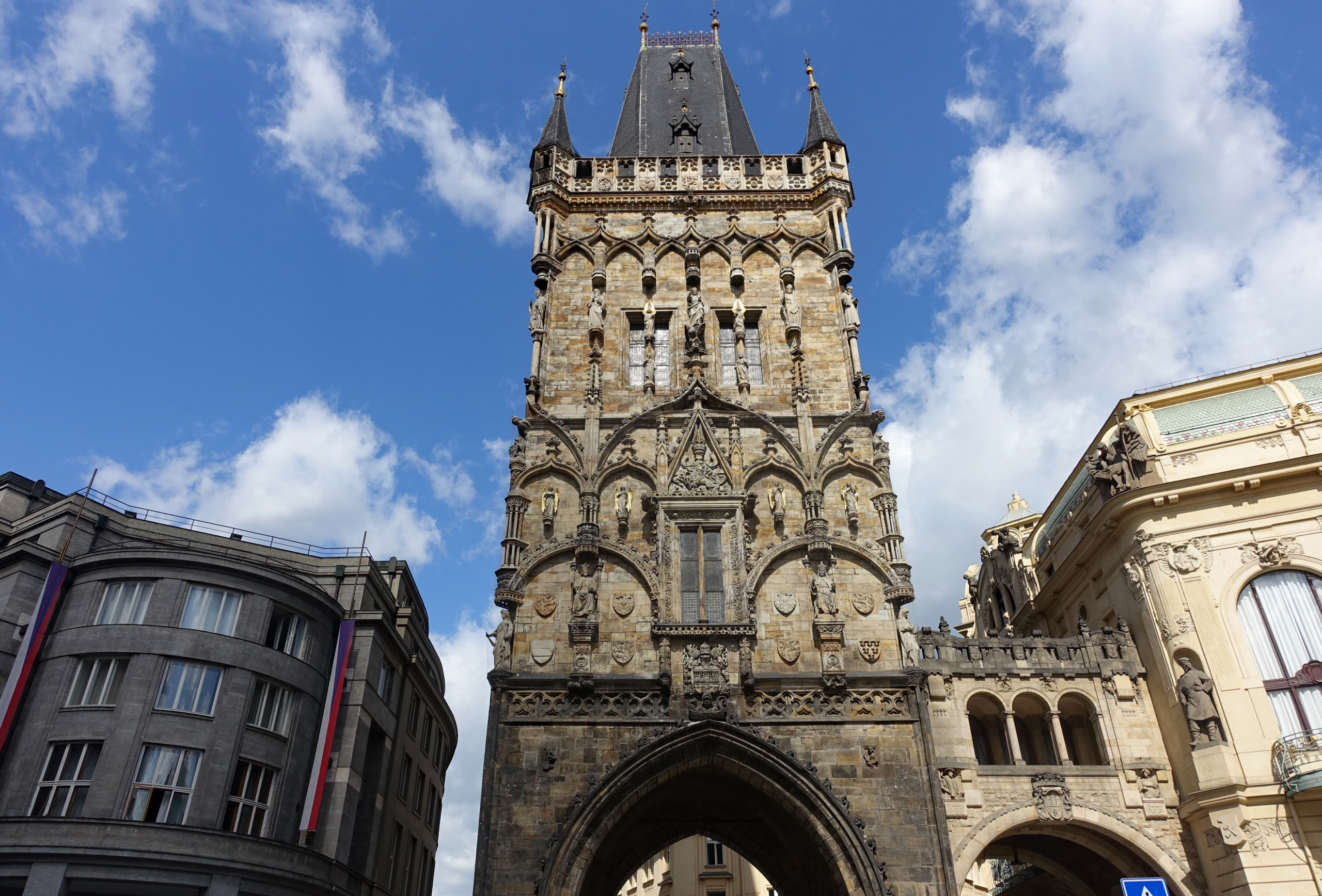
The Jan Hus Memorial stands prominently at one end of Old Town Square. Born in 1369, Jan Hus became an influential religious reformer in Prague and was a key predecessor to the Protestant movement of the 16th century. His works criticized the moral decay of the Catholic Church and being a Czech patriot he believed mass should be given in the local language, rather than Latin. He was ultimately condemned and burned at the stake in 1415. The monument was unveiled in 1915 to commemorate the 500th anniversary of his martyrdom.
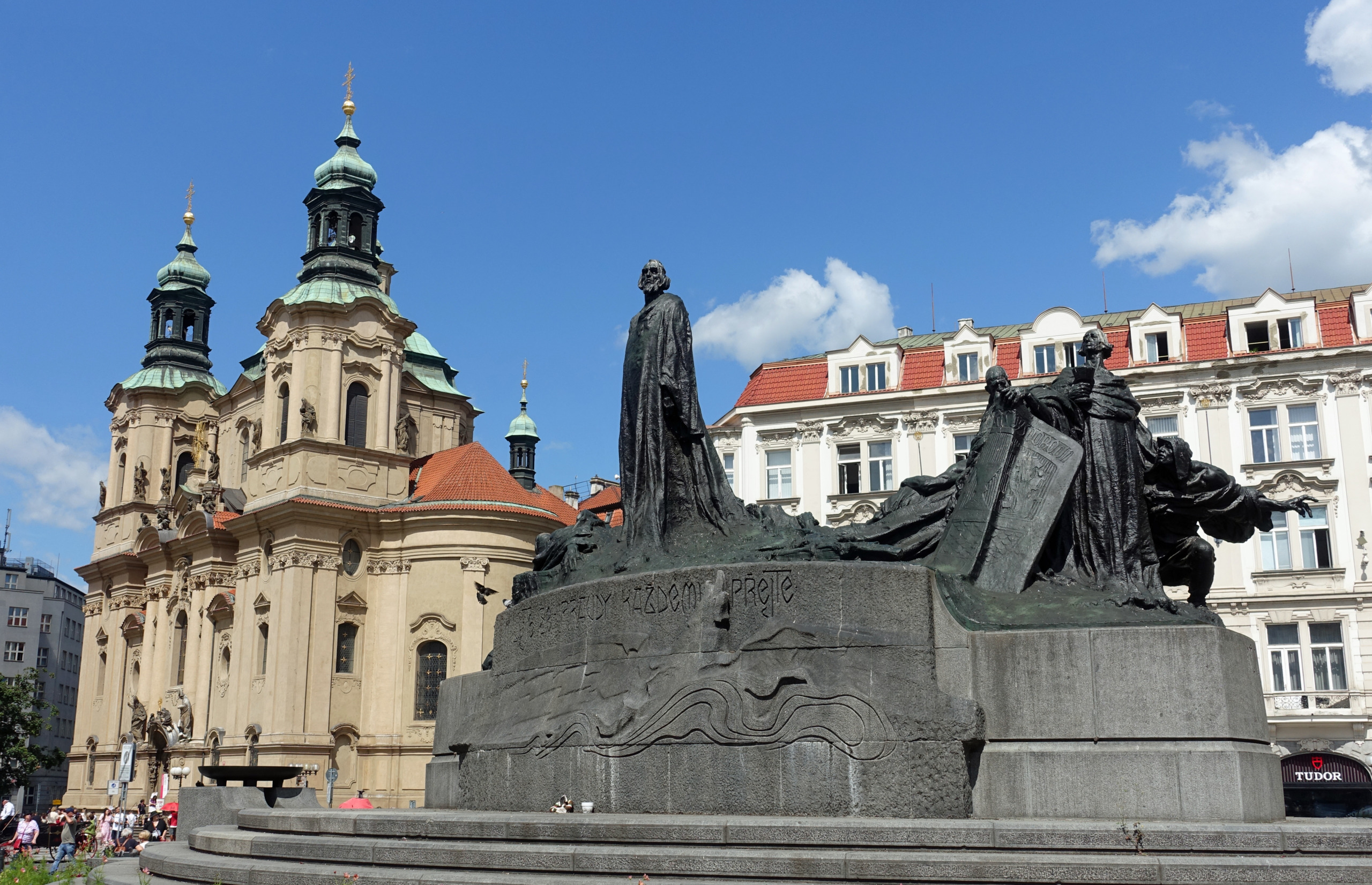
Dominating one side of Old Town Square stand the Church of Our Lady before Tyn, one of the most impressive Gothic religious buildings in Prague, built from the mid-14th century to the 16th century. As you stand and face the church, it becomes evident that the mighty twin towers are not symmetrical. One (Adam) is larger than the other (Eve). This representation of masculine and feminine sides is characteristic of Gothic architecture of the period.
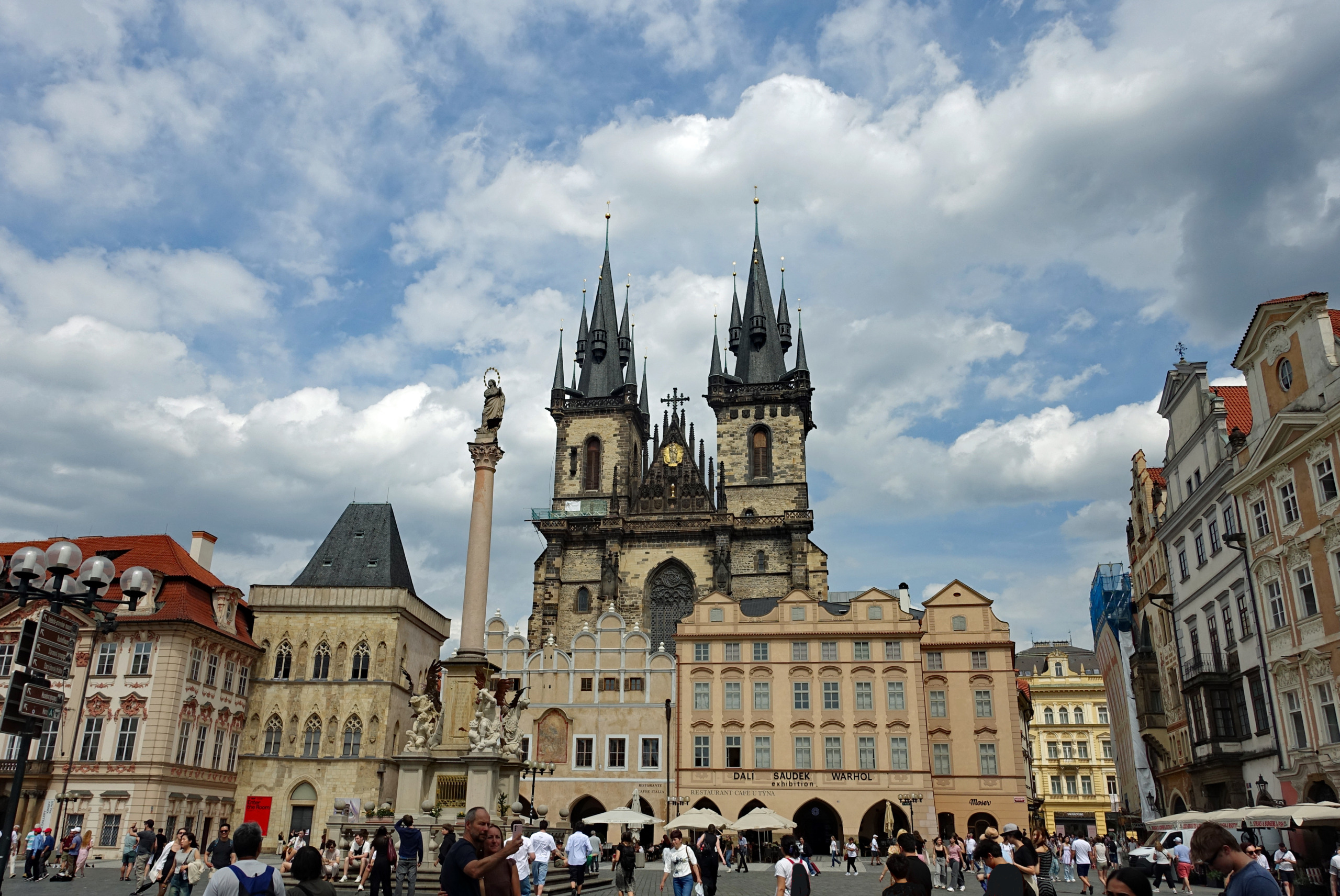
The Church of Saint Nicholas is an imposing Baroque church located on one corner of Old Town Square and is among the oldest churches in Prague Old Town. The old church was probably built in the 12th century but between 1732-1739 the ancient Gothic church building was demolished and the current Baroque church was built. Confusingly there is a church with the same name, built during the same period, in the same style, by the same architect on the other side of the river!!
Charles Bridge is a medieval stone arch bridge over the Vltava River linking Old Town and Prague Castle. Construction began in 1357 and was finished in the early 15th century. It was the only means of crossing the river until 1841 and is located on the historic coronation route of the Bohemian kings. The bridge is guarded on either end by two towers, one built in the Renaissance style and dating from the 16th century, and the other late Gothic and dating from 1464. The bridge is decorated by 30 statues, most of them baroque style, originally erected around 1700, but all have now been replaced by replicas.
The other Church of Saint Nicholas situated across the river in Lesser Town was built between 1704 and 1755 on the site where a Gothic church from the 13th century formerly stood. This church as been described as ‘the most impressive example of Prague Baroque’ and the greatest Baroque church in Prague. While the church excels in architecture and decoration, it is the interior frescoes and sculptures that are the most impressive. Altogether, there are approximately 3,000 m2 of wall paintings in the church in addition to over fifty statues with the above-life-size statues of Jesuit saints being the most significant. The artificial marble pulpit’s construction and fine ornamentation are unrivalled in Bohemia. The Baroque organ has over 4,000 pipes and was played by Mozart in 1787. I am a fan of ceiling frescoes so this church was one of my favorites and worth a visit.
Prague Castle is a so large with many significant buildings that we decided a 2.5 hour free walking tour was the best way to learn some history and see a few of the highlights. Serving as the official residence and workplace of the president of the Czech Republic, the castle was built in the 9th century and has long served as the seat of power for kings of Bohemia, Holy Roman emperors and presidents of Czechoslovakia. Prague Castle is the largest ancient castle in the world occupying an area of almost 750,000 square feet. Even after 2.5 hours we barely scratched the surface of what there is to see here.
The Schwarzenberg Palace within the castle grounds is an Early Renaissance building whose facade is elaborately decorated with Sgraffito of a North-Italian and Venetian type, dating back to 1567. What is Sgraffito you ask…..its an artistic or decorative technique of scratching through a coating on a hard surface to reveal parts of another underlying coating which is in a contrasting color. It certainly makes a beautifully designed building!
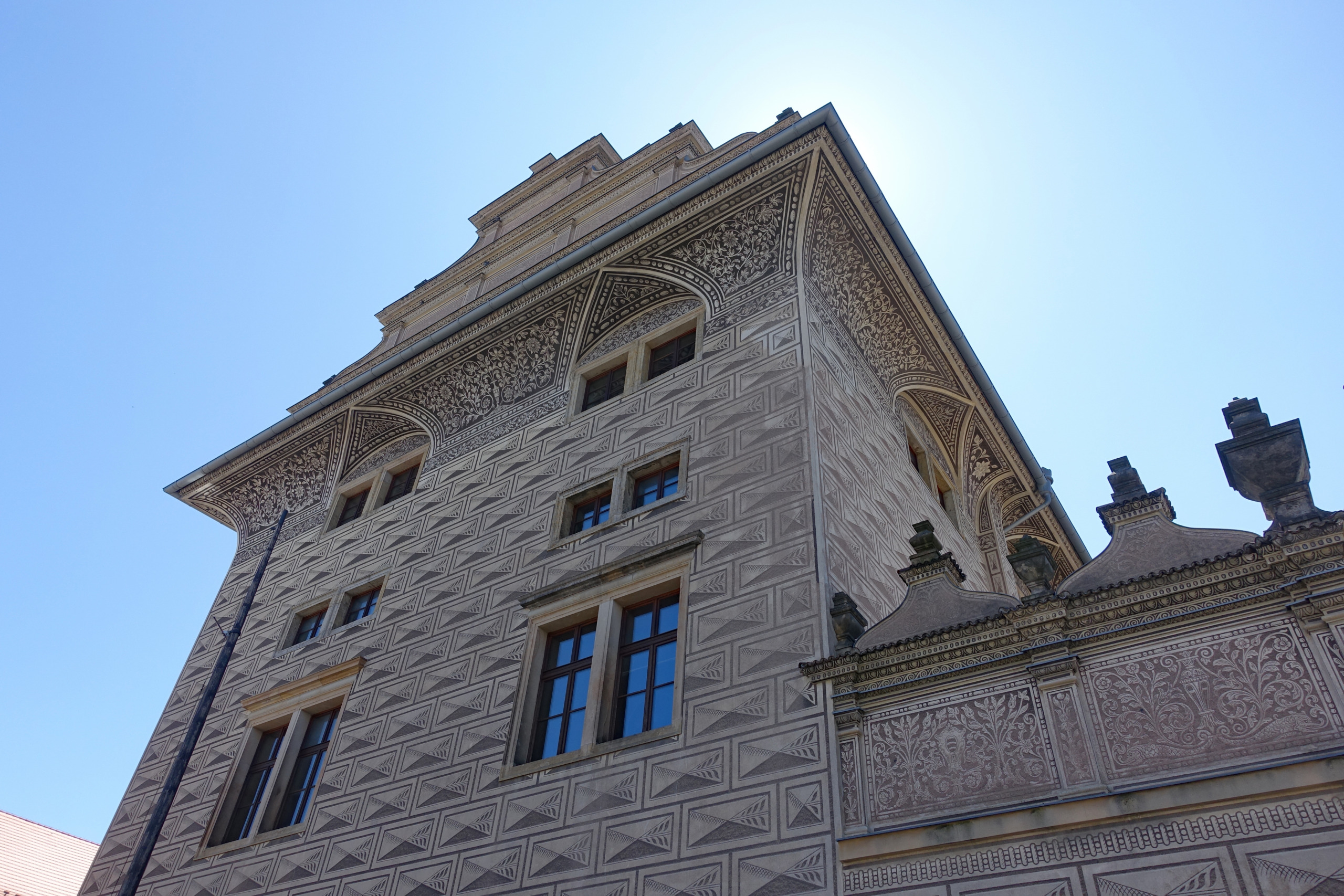
The Palace Guards are members of a special army division directly serving the president of the Czech Republic. Every day at noon there is a 40 minute ceremonial changing of the guards that includes music and a parade. Its a popular event was interesting to see for a few minutes before moving on to the next stop of our tour.
In the heart of the palace grounds St. Vitus Cathedral is surrounded by other buildings so its impossible to get a grasp on how large this church is. After exiting a corridor we came face to face with the imposing west facade and the huge rose window, WOW!! This cathedral is a prominent example of Gothic architecture and is the largest and most important church in the country, containing the tombs of many Bohemian Kings and Holy Roman Emperors. One of the most outstanding features of the Cathedral is the monumental mosaic of The Last Judgement on the south facade. The mosaic was completed in 1371 and is made of approx one million glass pieces in over thirty shades of colored glass. More than 20 years ago a protective varnish was applied on its surface to protect it against further corrosion that repeatedly formed after each cleaning. It’s surprising what good condition the mosaic is in after being exposed to the elements for over 650 years.
A short tram ride away from the old town is the Vyšehrad historic fortress, probably built in the 10th century. Inside the fortress is the Basilica of St. Peter and St. Paul where seemingly every inch of the walls, pillars and ceilings is covered with ornate, flowing paintings.
The Franz Kafka Rotating Head is a kinetic sculpture by David Cerny depicting Bohemian German writer Franz Kafka. The sculpture is made of 42 rotating stainless steel panels. Each layer is mechanized and rotates individually. Because of the complicated programming, servicing must be done every two weeks and unfortunately the statue was shut down for maintenance when we visited.
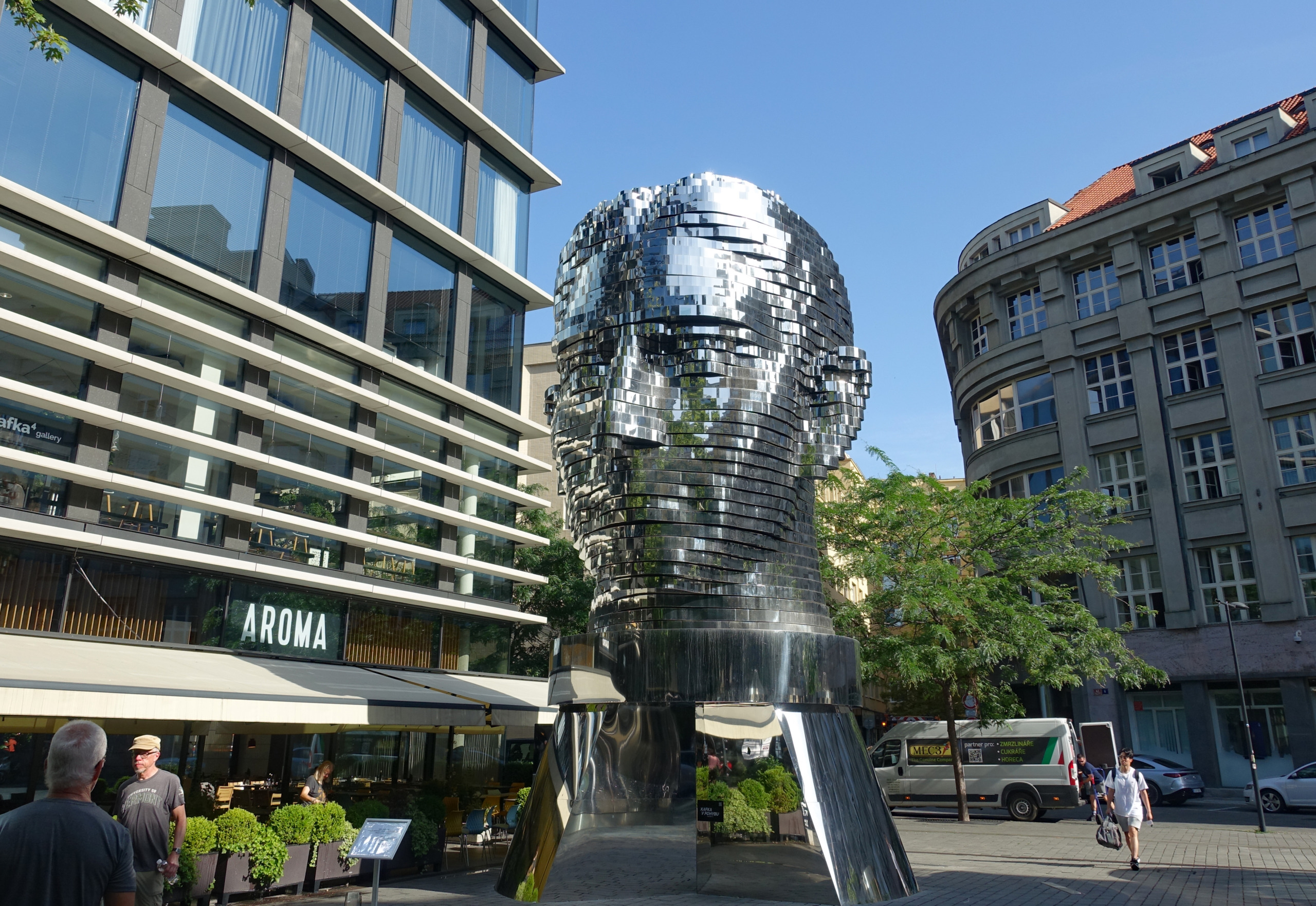
The Dancing House is the nickname given to a building designed by the Croatian-Czech architect Vlado Milunic in co-operation with the renowned Canadian-American architect Frank Gehry. The building was designed in 1992 and completed in 1996. The very non-traditional design was controversial at the time because the house stands out among the Baroque, Gothic and Art Nouveau buildings for which Prague is famous.
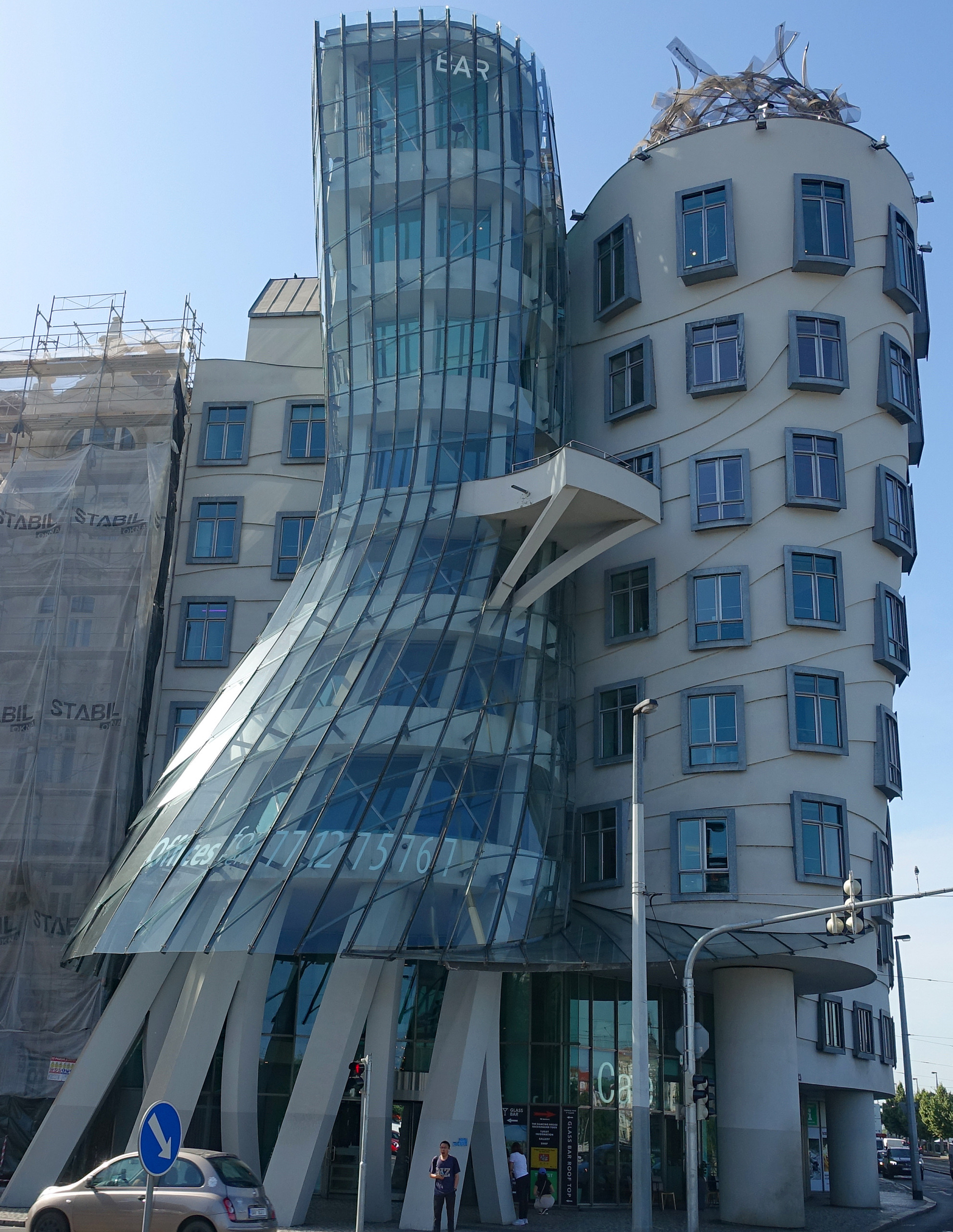
Well, I am pretty sure that Blair has had more than his fill of churches and historic buildings during the past six weeks in Budapest, Vienna and Prague. We are leaving Europe headed for our hometown of Calgary where we will spend the summer with friends and family. Time for a few golf games, bike rides and trips to the magnificent Rocky Mountains. Once summer comes to a close we will take to the skies, back to Japan for another look around…..
TRIP TIPS
We tried out the AXA gym and were not overly impressed so we ended up joining Xplore Fitness which is much larger and has more equipment. A one day pass to AXA cost 150 CZK (USD $6.92) each and a one day pass at Xplore Gym cost 340 CZK (USD $14.51) each. We ended up buying a one week pass at Xplore for 890 CZK (USD $42.18) so we got the daily cost down to 222 CZK (USD $10.55) each.
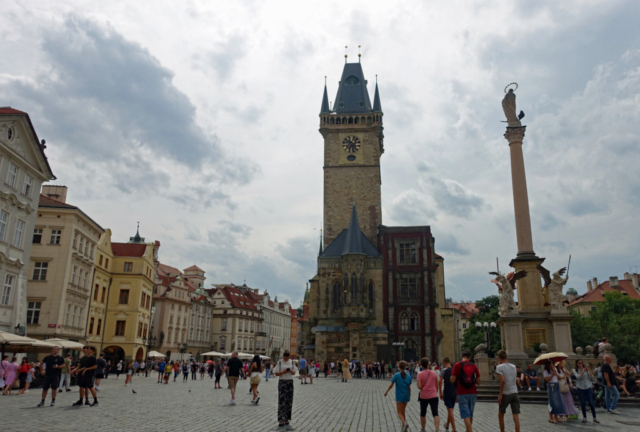

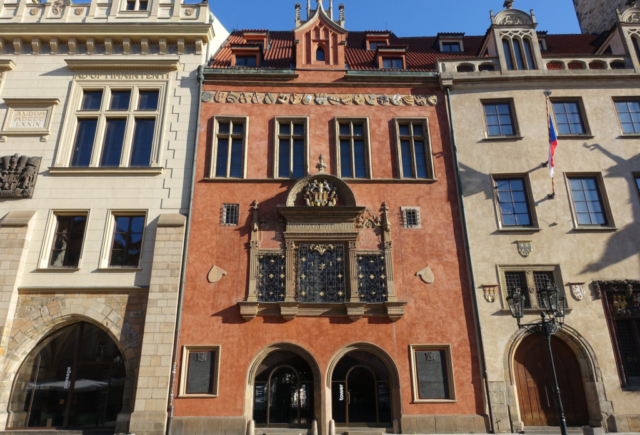

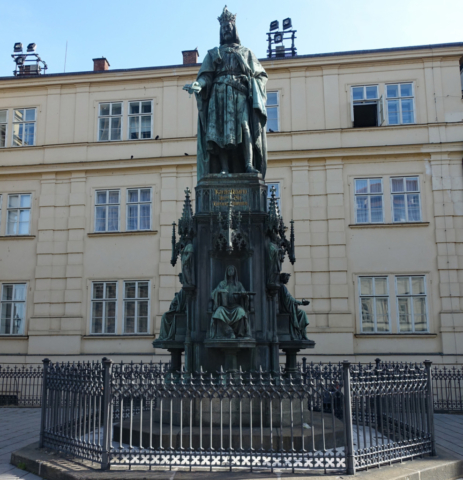

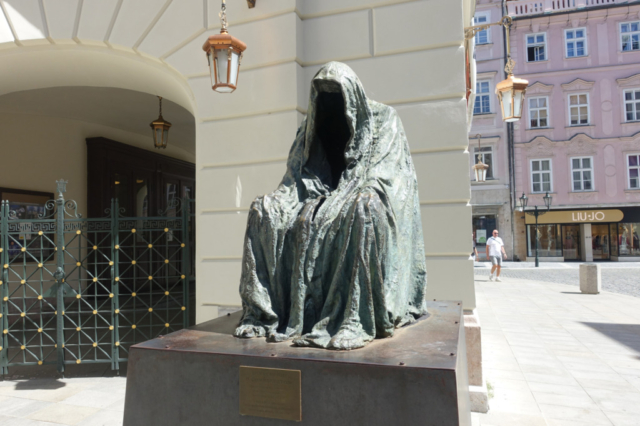
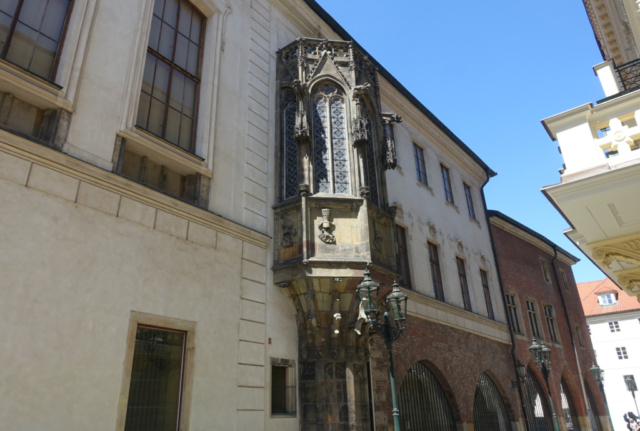
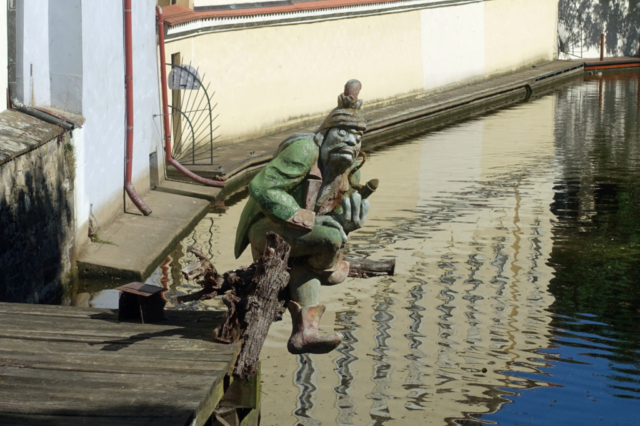
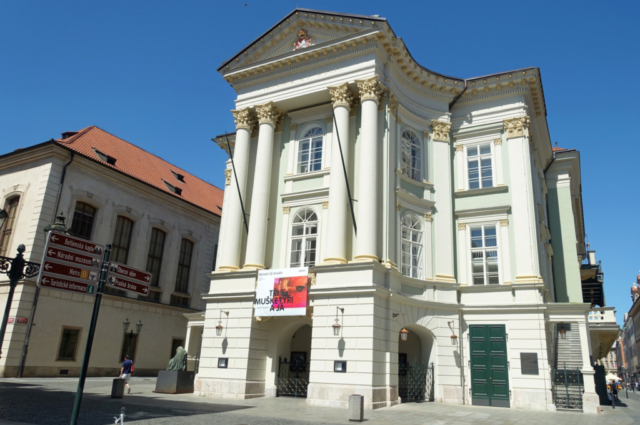

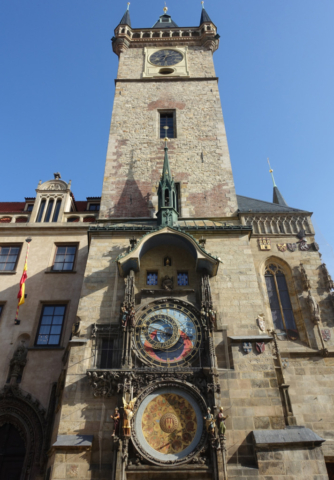
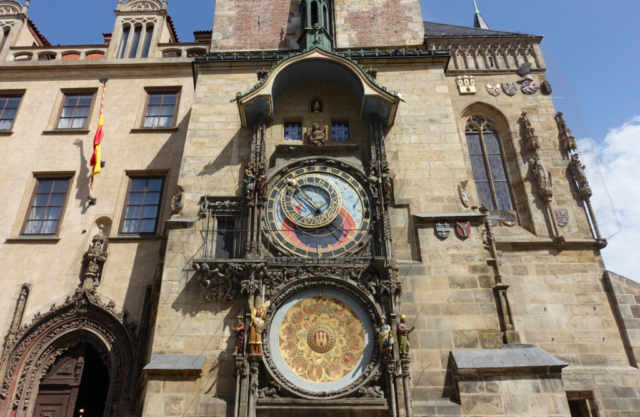
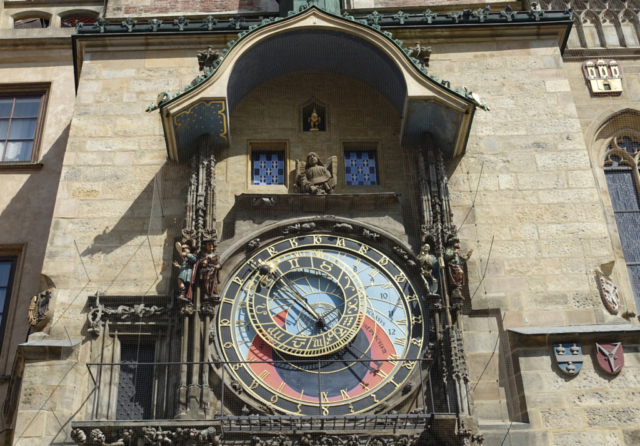
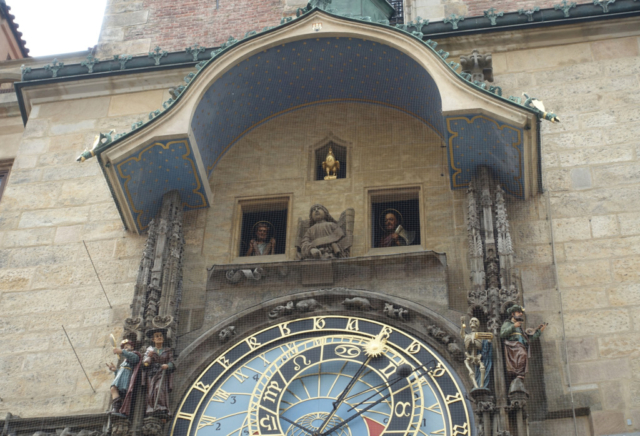
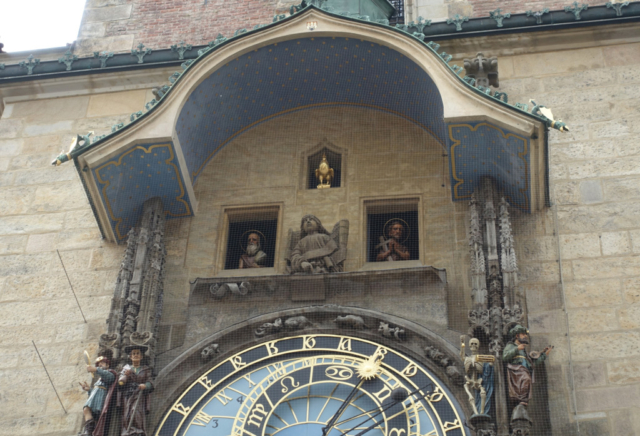
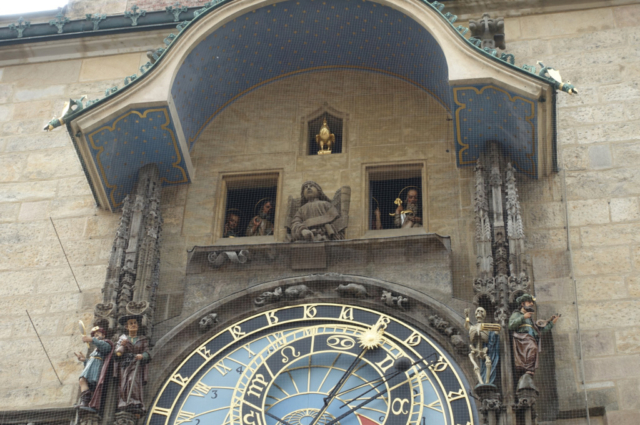

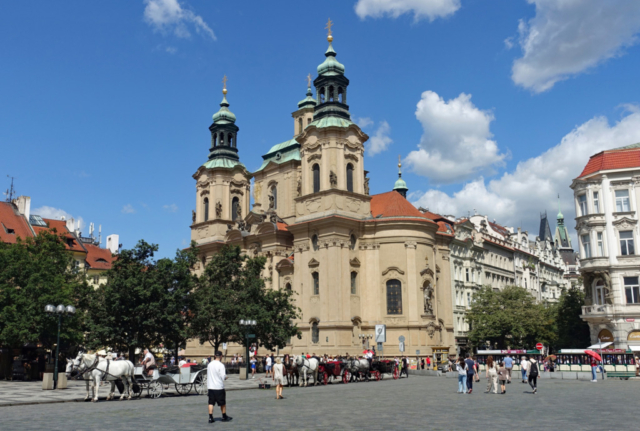

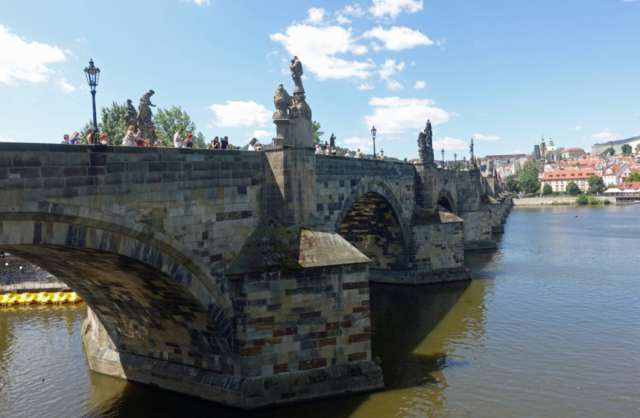
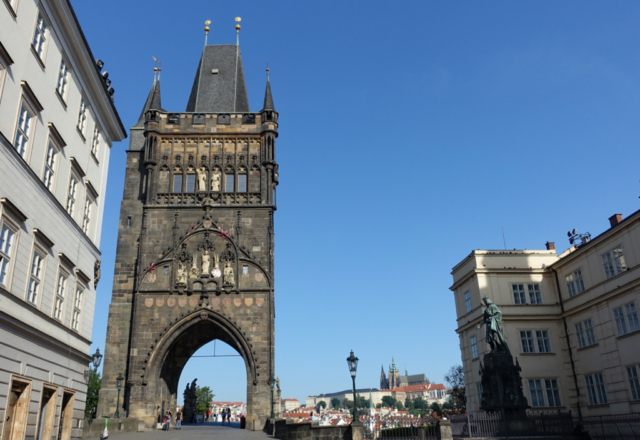
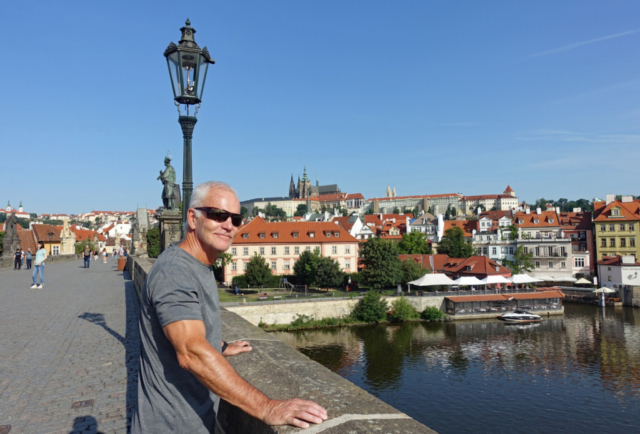
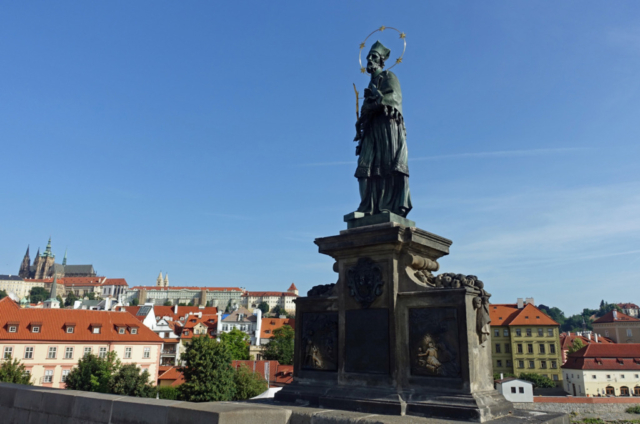
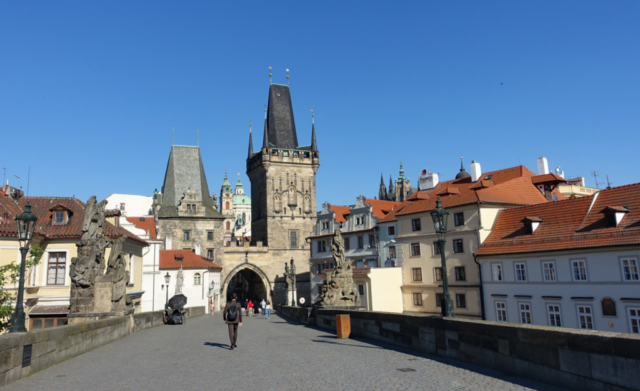
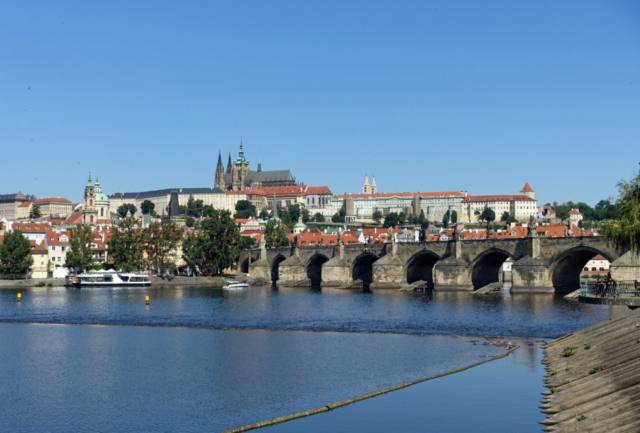
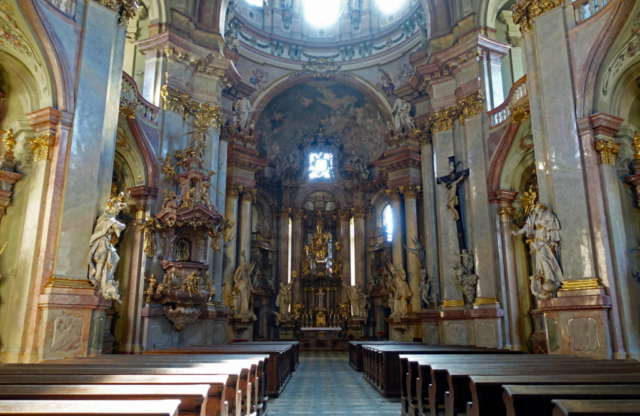
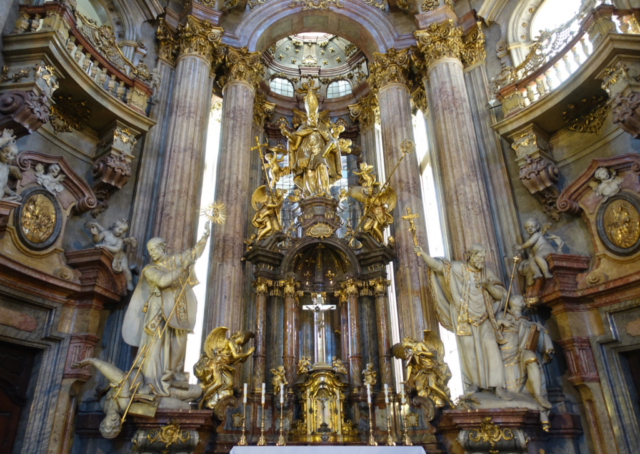
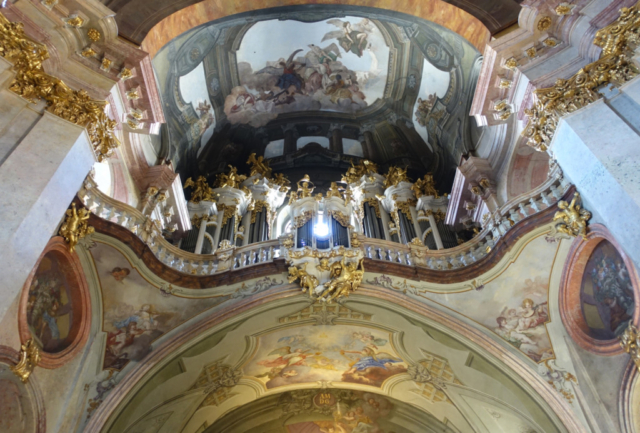
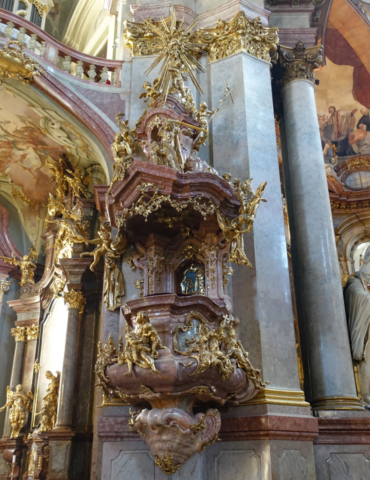
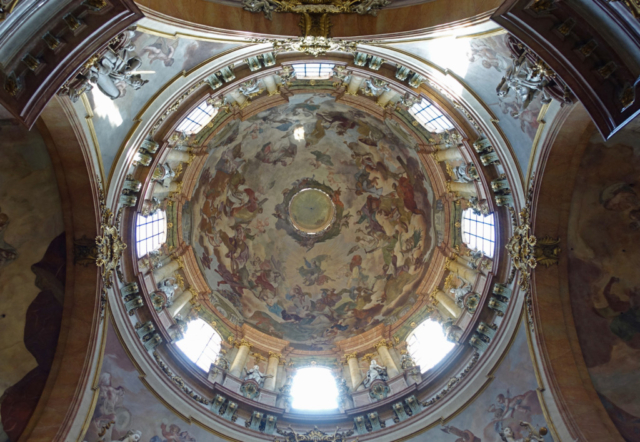
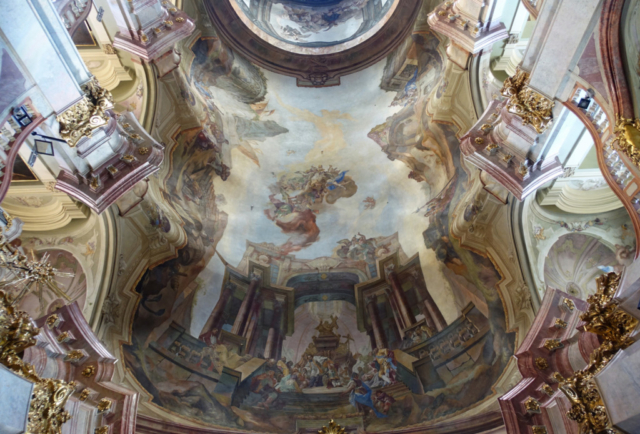
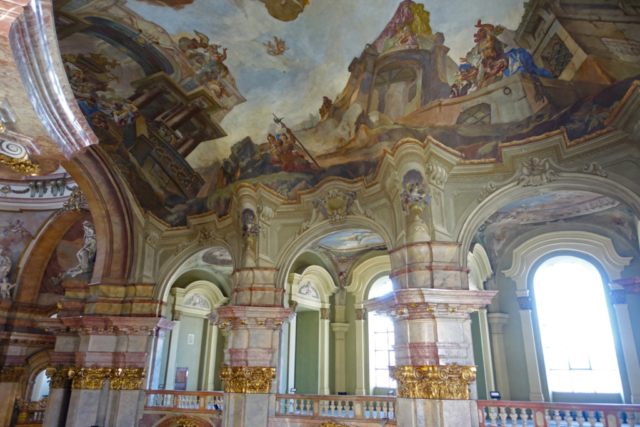
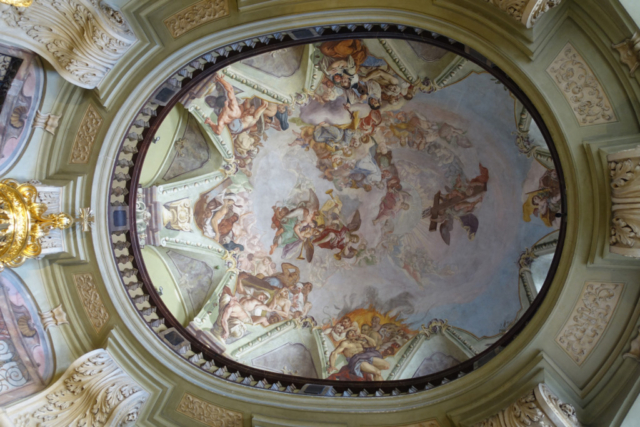
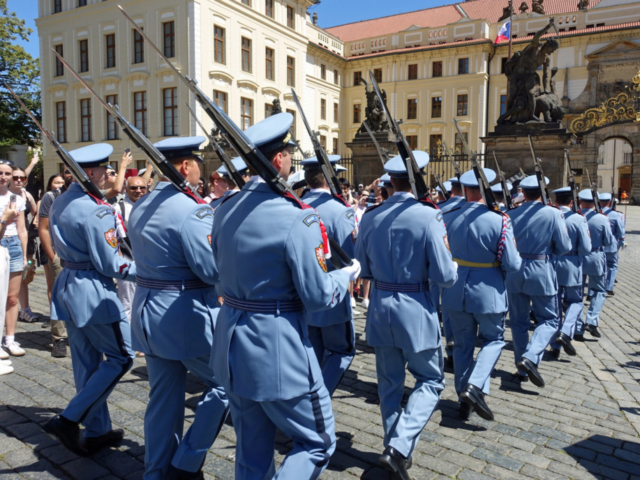
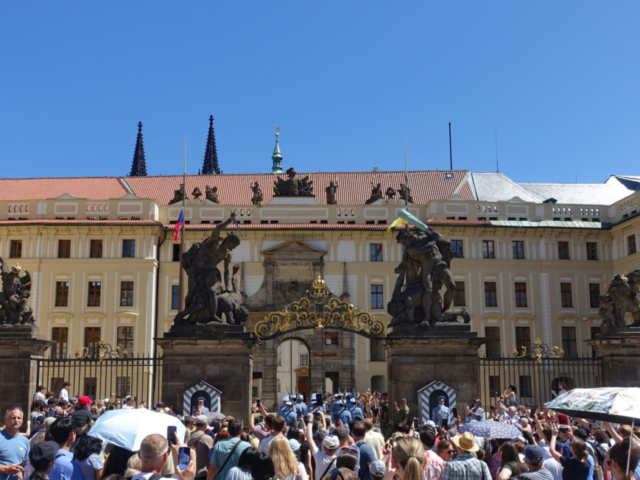
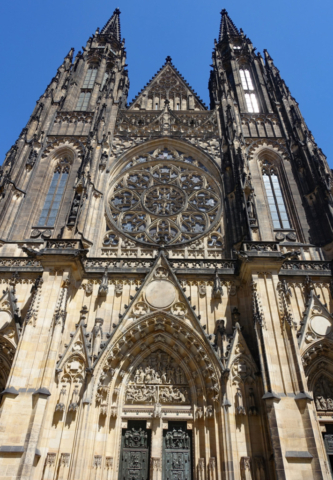
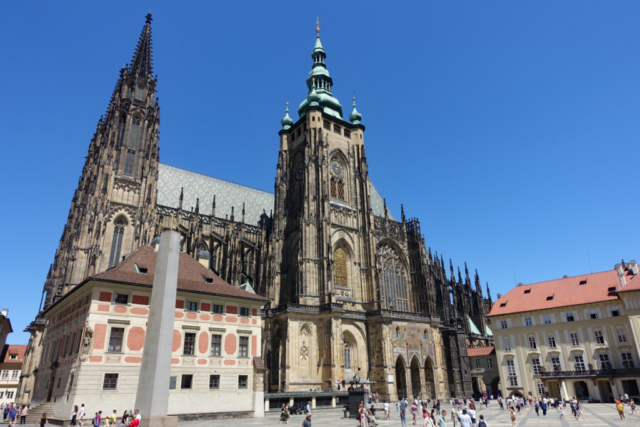
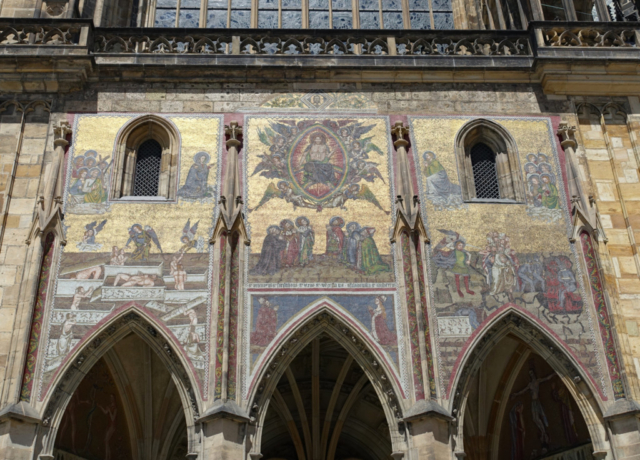
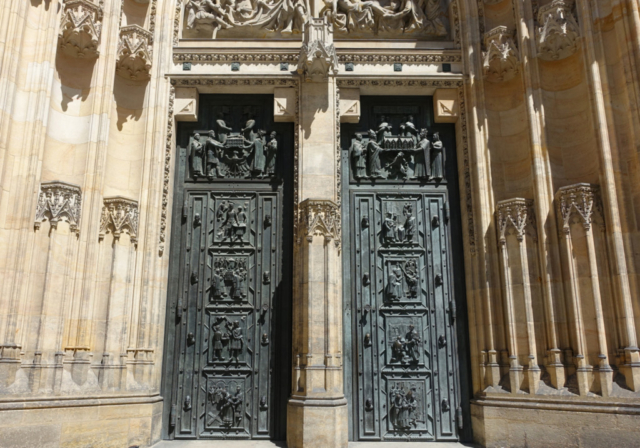
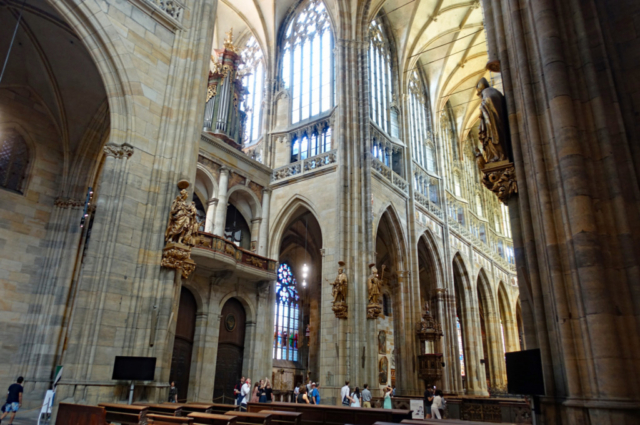
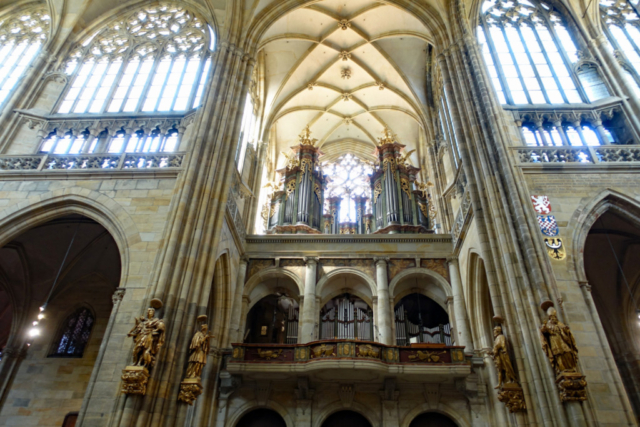
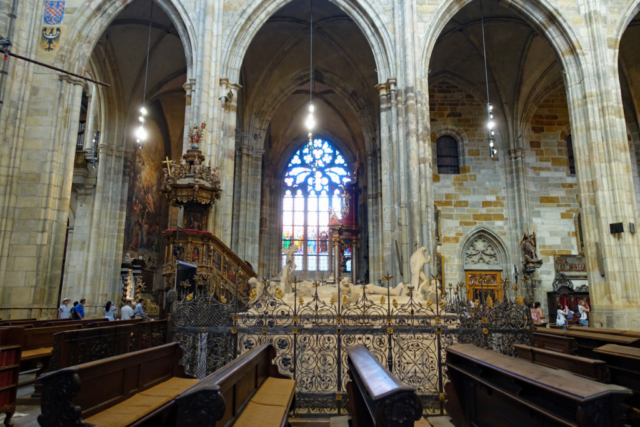
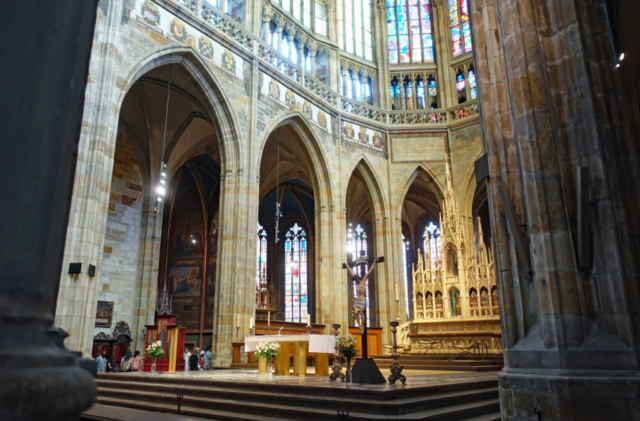
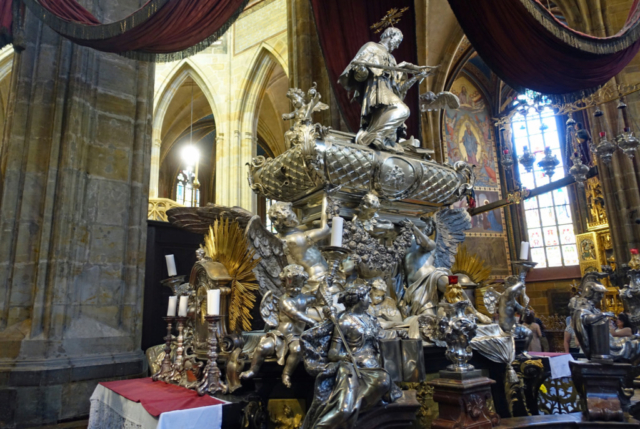

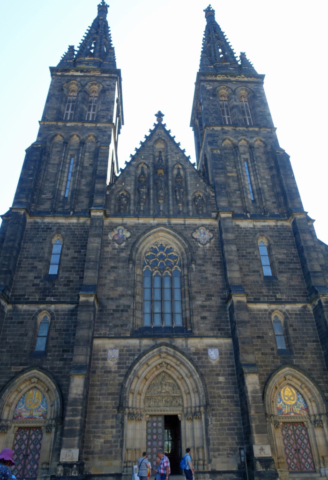
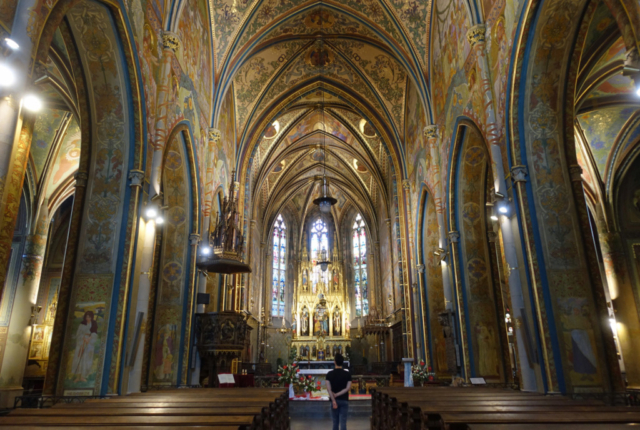
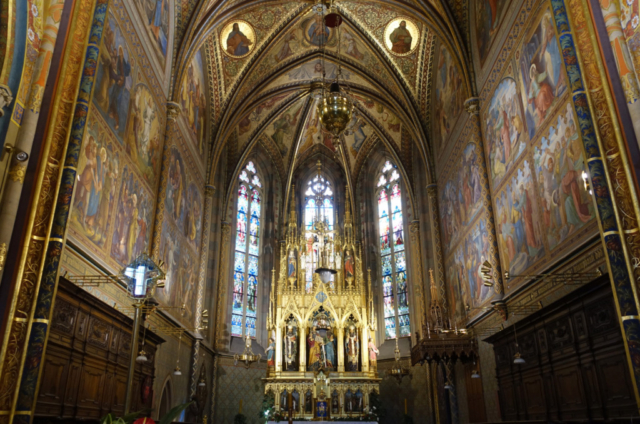
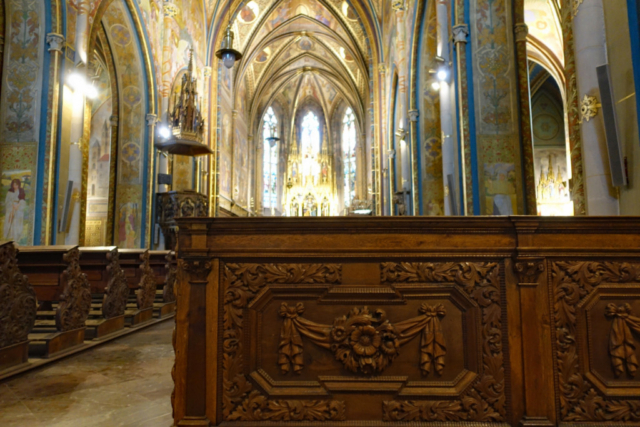
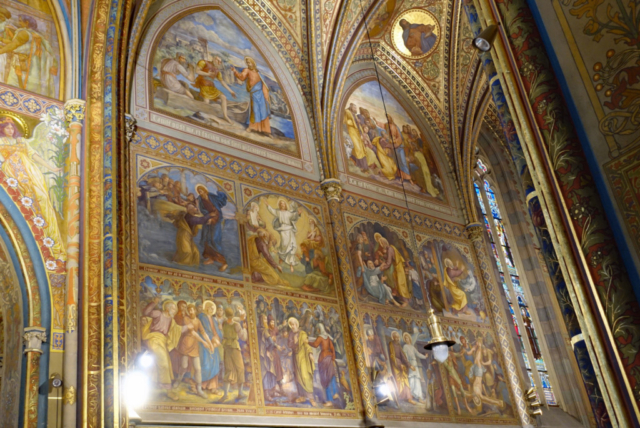
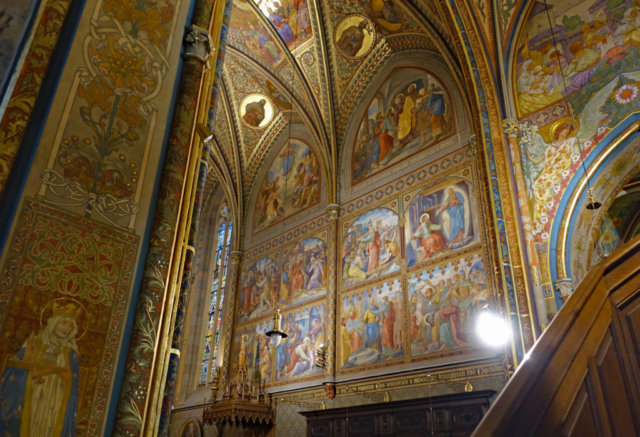
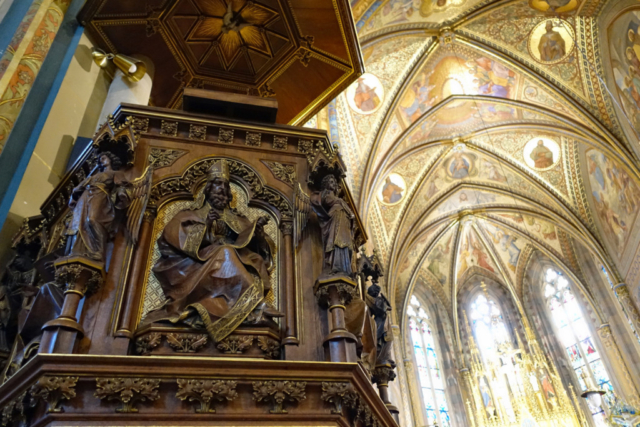
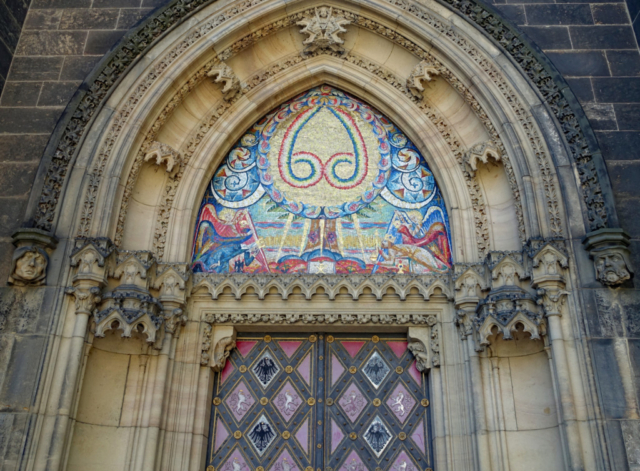
Wow…great post and description. Prague is on my bucket list. I hope to make it there some day. You both look amazing, happy and healthy.
Envious xxoo
Thanks Bruce! You will enjoy Prague when you get there and I hope we can catch up with you somewhere. Life is treating us well and we continue to enjoy our travels. All the best!! xxx